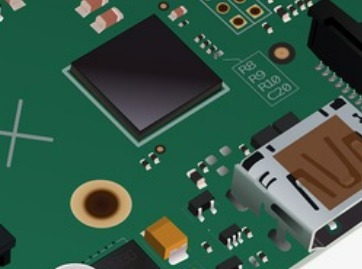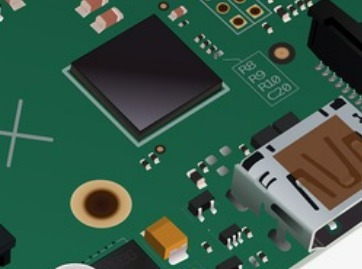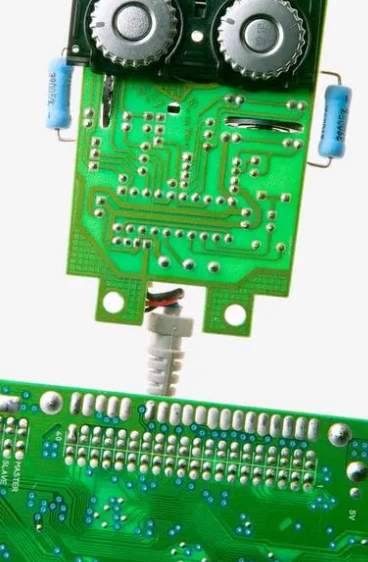
According to Maxwell equations, charges in moving lines can generate a current, which in turn generates a magneTIc field. Such magnetic fields generated by moving charges are called "magneTIc lines of flux". The direction of the flux line can be easily indicated using the "Right-Hand Rule", as shown in FIG. 4. The right thumb represents the direction in which the current is flowing, and the rest of the curled fingers surround the line, representing the direction of the magnetic field or flux line. In addition, a time-varying magnetic field creates a vertical electric field. Radio-frequency radiation is a combination of this magnetic and electric field. Magnetic and electric fields leave the PCB structure by means of radiation or conduction.
Note that the field runs around the boundary of a closed loop. In the PCB, the source driver generates RF current and transmits the RF current to the load through the wiring. The RF current must pass through a return system to the source (Ampere's law). As a result, an RF current loop is created. The loop is not necessarily annular, but is usually circumferential. Because this process creates a closed loop within the return system, a magnetic field is generated. This magnetic field in turn produces a radiating electric field. In the near field, it is dominated by the magnetic field component. In the far field, however, the electric to magnetic field ratio (wave impedance) is about 120πΩ or 377Ω, independent of the source end. So clearly, in the far field, the magnetic field can be measured using a circulating antenna and a fairly sensitive receiver. The receiving level will be E/120π(A/m, if E is in V/m). The same can be applied to electric fields, which can be measured near the field with suitable measuring instruments.

Another simple explanation of how RF exists in PCBS can be found in Figures 5 and 6. Typical circuits are analyzed here in the time domain and frequency domain. According to Kirchhoff and Ampere's laws, a closed circuit must exist if the circuit is to work. Kirchhoff's law of voltage states that the sum of voltages around any closed path in a circuit must be zero. Ampere's law states that a given current will induce magnetic induction at a point, and it is calculated in terms of the current unit and its position relative to that point.
If a closed loop circuit does not exist, the signal cannot cross the transmission line from the source to the load. When the switch is off, the circuit is set up and AC or DC current begins to flow. In the frequency domain, we think of this current as RF energy. In fact, there are not two different kinds of current (time domain or frequency domain current). There is always only one current, and it can be present in either the time domain or the frequency domain. The RF back path from the load to the source must also exist, otherwise the circuit will not work. Therefore, PCB structures must obey Maxwell's equations, Kirchhoff's law of voltage, and Ampere's law.
Maxwell's equations, Kirchhoff, and Ampere's law all state that a closed-loop network must exist in order for a circuit to function properly or for a desired purpose. With a typical circuit like this. When a wire travels from the source to the load, a return current path must also exist, as stipulated by Kirchhoff and Ampere's laws.
, a switch and the source drive end (E) in series. When the switch is off, the circuit works as expected; When the switch is on, it has no function. In the time domain, the signal is expected to arrive at the load from the source. The signal must have a return path for the circuit to be valid, and this is usually through a 0V(grounded) return structure (Kirchhoff's law). The flow of RF current is from the source to the load and must return by the path with the least impedance possible, usually through a ground route or ground plane (mirror plane). The existence of radio-frequency currents is best illustrated by Ampere's law.
Before discussing "how EMI is produced in PCB", it is necessary to understand the basic mechanism of "how flux line is produced in transmission line", because the latter is a basic concept of the former. A flux line is a current flowing through a fixed or variable impedance. Impedance in a network is always present in the wiring, welding of components, through hole (via)... Etc. If the flux line is present in the PCB, according to Maaxwell's equation, the various transmission paths of RF energy must also exist. These pathways may radiate through free space or be transmitted through interconnections of cables.









